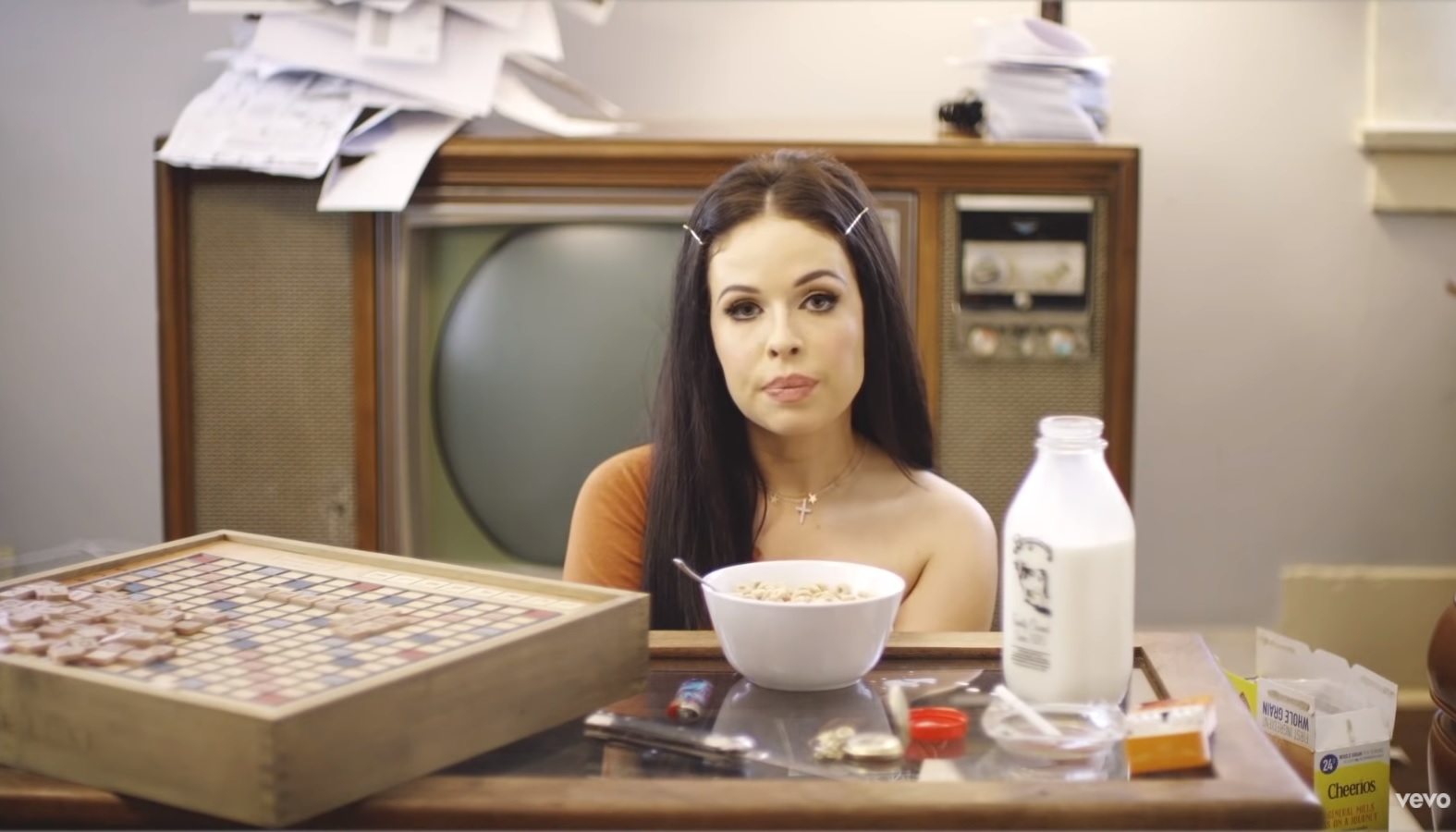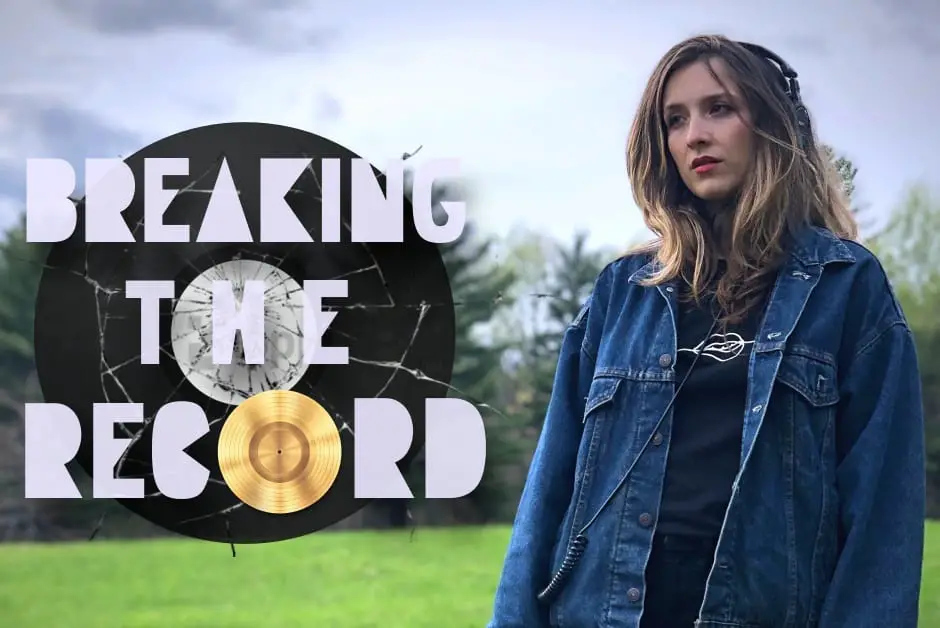You think you have lost your faith but you have not, you have only misplaced your faith. And you can find it, where it lies now deep in your soul, and the way to do that is through the simple process of love.
When one thinks of Florence and the Machine, one most likely immediately thinks of their 2009 hit single “Dog Days are Over” from their first LP “Lungs.” After a grandiose second album “Ceremonials,” Florence Welch has drawn back the theatrics and replaced it with raw human emotion, cravings, and vulnerabilities.

With the new album How Big, How Blue, How Beautiful, Florence Welch has proved that art can imitate the artist, and act as a form of catharsis and self-discovery. On April 25, 2016, Florence and the Machine released a short film entitled “The Odyssey.” This film stitches together nine songs and already-released music videos from the album, and in doing so creates a winding and twisting tale of heartbreak and chaos, battling of demons and the fight for survival and change.
A wise man once told me someone is always going through a storm, is about to go through one, or is just coming out of it; the good thing is that storms always pass. “The Odyssey” takes the viewer on that very journey through the calm of the storm, the chaos it creates, and the attempt to rebuild oneself from the rubble.

“The Odyssey” is a 48-minute spectacle of today’s age, a true piece of art and documentation of life and the human struggle. Having this visual work to accompany the album makes “How Big, How Blue, How Beautiful” even more tangible and relatable—it allows fans of Florence and the Machine to get under Florence’s skin, see the world how she has seen it, and learn from mistakes made.
Florence is first heard talking to man in a car, discussing how to deal with pain. “So you think people who suffer together would be more connected than people who were content?,” Florence says. “What if they are creating the disaster within themselves?” This dialogue sets the tone for the rest of the film, and is the beginning of the first chapter that is the song “What Kind of Man.” The talk of a brewing storm is seen in the film as both literal and figurative—rain and water are key components in the film as the viewer is taken on a journey of a personal storm within Florence.
Dance is a major incorporation of the film, with similar modern movements creating a common link throughout all the chapters. In “What Kind of Man,” we see Florence being tossed around by men (gracefully and methodically), fighting back against containment and trying to retain control.

Florence’s movements are mesmerizing to watch. They are simple yet captivating. It is easy to tell Welch put her whole being into the performance — her whole body is overcome by emotion; nothing is being faked. When an artist puts her entire soul into their artwork, it is the most rewarding thing. Watching someone do what she loves with such passion is an unbeatable and undeniably moving experience.
After an aggressive battle with love and relationships in “What Kind of Man,” Florence is seen in solitude and isolation crossing a bridge over a busy Los Angeles highway.
Walking along a busy road at sunset, Florence begins singing title track “How Big, How Blue, How Beautiful” in a heartwarming acappella rendition. Even with the backdrop of bustling city life and rushing cars, Florence has the power to make the big city of Los Angeles feel so small and quiet. It’s a reminder that the world is always moving, things are always happening, and the sky is always changing. There are many things in life that we miss, but boy are there beautiful moments we get to cherish as well.
Feeding on the feeling of isolation brought by “How Big, How Blue, How Beautiful,” we shift back in time to “St Jude,” one of the most serene, peaceful, and resigned songs that is a part of “The Odyssey.” The cinematography is simply stunning, with muted colors except for a vibrant sunset, we feel the pain and suffering in Florence’s voice and actions as she struggles in this beautiful world. Florence is soaked from rain in the majority of the chapter, her chilling bones matching her chilling voice as she sings, “And I’m learning, so I’m leaving/And even though I’m grieving/I’m trying to find the meaning/Let loss reveal it.”

There is nothing grandiose about “St Jude,” the song or the chapter in “The Odyssey.” With an organ and haunting whispers in the chorus, “St Jude” is like a prayer that is waiting to be answered. It fills the air and mind with hope for a better day, and that help will come make things all better. At the end of the chapter, locusts swarm and Florence raises her arms and drops to her knees, giving up her power to control everything and just letting mother Earth take the reigns. That is something that we need to remember in this lifetime—we cannot control everything. Sometimes what we want most, we may have to let go.
St. Jude, the patron saint of the lost causes
St. Jude, we were lost before she started
St. Jude, we lay in bed as she whipped around us
St. Jude, maybe I’ve always been more comfortable in chaos
The next chapter of “The Odyssey” digs deeper into that struggle for control, and the demon within everyone that is always itching to see the light of day.
When “Ship to Wreck” came out as a single, I was unsure about its standing amongst previous Florence and the Machine work. It sounded too light and airy for the lyrics it possessed, and was too mainstream-sounding for an indie artist I have loved since the very beginning. However, after watching “The Odyssey,” the song is put into a whole other context for me — it is one of the most important chapters to the storyline. “Ship to Wreck” focuses on both sides of Florence — the demon begging to be released, and the cool, calm and collected one. Florence literally fights the storm within herself in this video. She is fighting for her own survival. “Did I drink too much/Am I losing touch/Did I build a ship to wreck,” sings Florence, reflecting on her habits with alcohol and a potential bad relationship.
Watch: “Ship to Wreck” (The Odyssey – Chapter 4) – Florence and the Machine
[youtube=https://youtu.be/B9v8jLBrvug?t=0s]
As a part of “The Odyssey,” this song exposes Florence’s bad habits and gets under the viewer’s skin with how relatable it is. We all have more than one version of ourselves—there is one that is a show we put on for others to make us like them, and there is one that is chaotic and wild, urging to get its way. “Ship to Wreck” shows how easy it is to succumb to the demons and suffering in life, and that it can become an endless cycle if something does not change.
The next chapter, “Queen of Peace,” echoes similarities from past and present, cutting back and forth between scenes of Florence and her lover and the two when they were young and growing up together. Animosity between their families has always caused pain and strife, a true “Romeo and Juliet” story with just a sad of an ending. No matter how hard she fights for her relationship to stay alive, in the end there is no use: “Suddenly I’m overcome/Dissolving like the setting sun/Like a boat into oblivion/Cause you’re driving me away/Now you have me on the run/The damage is already done/Come on, is this what you want?”
Using the same intimate and vulnerable choreography as throughout the film, Florence and her love are shown pulling away with the other pulling back, fighting to stay together.

The song swells into a bounding orchestra as young Florence and her love run off together and present Florence and her love are forced to say their parting goodbyes. This serves as the climax of the film, marking the first true heartbreak that put the rest of “The Odyssey” into motion.
This song captures the many feelings a scathing heartbreak, just another storm we sometimes must deal with in this chaotic thing called life. Throughout the chapter are images of crashing waves upon the shore, showing the break and anger of something beautiful.
“Long & Lost” continues the “Queen of Peace” storyline and serves as the beginning of the resolution to the film. Florence’s love gives a narration:
To give yourself over to another body
That’s all you want really
To be out of your own and consumed by another
To swim inside the skin of your lover
Not have to breathe
Not have to think
But you can’t live on love
And salt water’s no drink.

Blue and yellow lights give mood to the depressing scene, showing the bitter coldness felt within Florence as she leaves her loved ones behind and sets out on the water. Evoking the same pain and longing as in “St Jude,” Florence sings, “Is it too late to come on home/Are all those bridges now old stone/Is it too late to come on home/Can the city forgive, I hear its sad song.”
Florence’s love closes by finishing his narration: “We’re dying of thirst so we feast on each other/The sea is still our violent mother/The blood round here pours down like water/Each wave a lamb lead to the slaughter/And like children that she just can’t teach/We break, and break, and break/And break ourselves upon the beach.”
Transitioning from the cold shore and icy love in Scotland, we see Florence back in Los Angeles, crossing another bridge as it comes. She sings “Mother” acappella — the transition song for the penultimate chapter, “Delilah.” During “Mother,” there are cuts to a motel scene where a man ask Florence when she is leaving, saying “This is just a place…no one stays here…” In a way, this song is reminiscent of life—begging for more and to be different, caught somewhere in a world between light and dark.

As the film shifts into “Delilah,” Florence is seen lying wearily on a couch. An old man sitting across the room is speaking in a direct voice: “You think you have lost your faith but you have not, you have only misplaced your faith. And you can find it, where it lies now deep in your soul, and the way to do that is through the simple process of love. Love yourself. Forgive yourself. You can’t love and forgive other people if you don’t first of all love and forgive yourself. You have to realize people are fallible beings. They make mistakes, they have to be excused from these mistakes and are allowed to continue on their quest for a better life and for goodness. So love yourself, then love other people. Please forgive yourself. Go on a journey finding love and forgiveness…”
If “The Odyssey” could be wrapped up into one, that quote would be it. It is all about the human condition, the struggles faced, and finding ourselves and forgiving others with love. Of course, none of this has to happens instantly — as Florence sings, “I’m gonna be free and I’m gonna be fine/Maybe not tonight.”
In the shadow of her second self once again, Florence is seen fighting all obstacles that come in her way, tying the story back to the beginning “What Kind of Man.”
Watch: “Third Eye” (The Odyssey – Chapter 9) – Florence and the Machine
[youtube=https://youtu.be/SCM8Qf3eGMQ?t=0s]
Drawing to an end, “Third Eye” is the perfect closing chapter to “The Odyssey” and gives hope to all can relate with what Florence has been going through—things can get better. Florence sings of redemption and the acceptance of love and forgiveness for herself, as the old man said in “Delilah.” Storms always pass, and in “Third Eye” we finally see Florence in the beauty of the aftermath. “You don’t have to be a ghost here amongst the living/You are flesh and blood/You deserve to be loved and you deserve what you are given,” she sings.
At the end of the video, Florence is led onto a stage with the curtain closed. You can hear a crowd cheering. She sings repeatedly, “I’m the same/I’m the same/I’m trying to change.”
Curtain opens.

This is the Florence we get, sufferings, overcomings, self-realization and all. And I wouldn’t want it any other way.
“The Odyssey” helped me realize that no one is defined by any one thing, and that it is okay to go through hardships in life and struggle for the meaning of things. Humans, just like life, are complex, vulnerable, yes – even stupid sometimes. But humans are also endearing, learners, lovers, and beautiful creatures. This world is big enough for us all. That’s all that truly matters.








